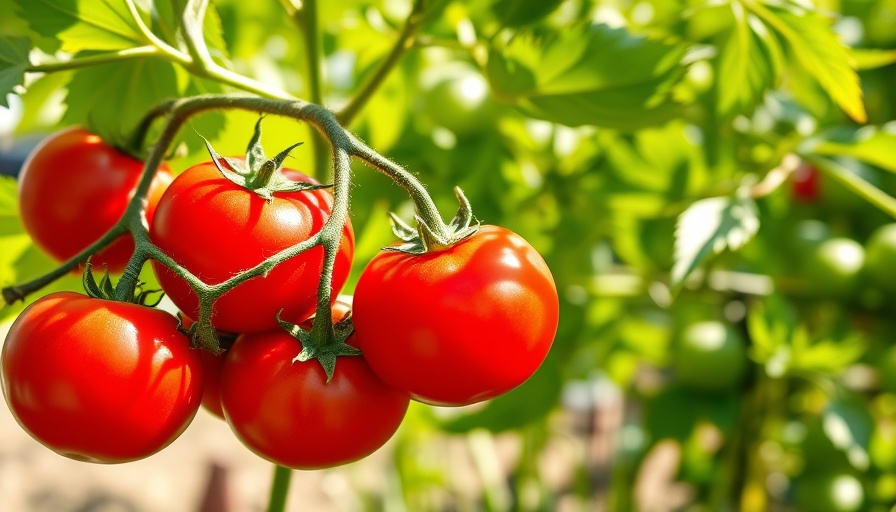
Understanding the Challenge: Why Birds Target Your Tomatoes
As joyous as birdwatching can be, especially when vibrant feathered friends flit about your garden, their foraging habits can quickly turn from charming to troublesome. When your tomatoes ripen, these winged visitors—blue jays, robins, and others—might see your vibrant fruit as an easy meal. Although many birds primarily seek moisture over fruit, the damage they inflict on your crop can impact your harvest significantly. Luckily, there are pragmatic strategies to keep these feathered foes at bay while still allowing beneficial species to thrive in your garden.
Effective Bird Deterrents: Strategies for Gardeners
To safeguard your tomatoes from birds, you can employ a range of effective and humane strategies. Here are some tips that can help:
Provide Alternative Food Sources
Redirecting birds' attention away from your tomatoes can be as easy as providing them with alternative food sources. By installing bird feeders stocked with seeds or offering fruits from less vulnerable plants such as figs, pears, or blackberries, you can attract birds away from your crops. Creating a mini bird-friendly ecosystem can keep them entertained and sated, reducing the temptation to feast on your precious tomatoes.
Utilize Netting for Protection
Covering your tomato plants with netting can act as a physical barrier against larger birds. While it’s essential to let in beneficial insects and avoid damaging your plants, lightweight netting can help. Make sure to select mesh sizes that allow airflow while keeping birds out. This solution is not only effective but can be a simple addition to your gardening toolkit.
Embrace Scare Tactics
Sometimes all it takes is a little psychological warfare to deter feasting birds. Scare tactics, like reflective materials, predator decoys, or noise-making devices, can create environments that are less appealing to them. Planting shiny tape or balloons near your garden can disrupt their comfort zone, encouraging them to seek food sources elsewhere.
Common Myths About Keeping Birds Away
With a wealth of information available, it's crucial to identify what truly works and what doesn't. Many believe that certain homemade remedies, such as hanging old CDs or using plastic owls, are foolproof. However, birds can quickly acclimate to these items, rendering them ineffective. Understanding the reasons why birds might target your garden can lead to more effective solutions that respect both the ecosystem and your garden's health.
Encouraging Beneficial Birds
While some birds can be pests, many play vital roles in pest control and pollination. Birds like swallows and sparrows help manage insect populations, which might otherwise damage your plants. By identifying which birds are beneficial and which ones are problematic, you can create a harmony where your garden flourishes without compromising your tomatoes.
Actionable Insights: Steps You Can Take
To wrap up your strategy, consider implementing these key steps:
- Provide Water: A shallow birdbath can serve dual purposes—keeping birds hydrated and steering them away from your tomatoes.
- Harvest Early: If you notice compelling bird activity, consider harvesting your tomatoes slightly earlier. Ripe tomatoes can be more tempting than just-ripening ones.
- Monitor Regularly: Keeping an eye on your garden at different times of the day will help you understand peak bird activity levels and allow you to act swiftly against potential threats.
By embracing sustainable gardening practices and offering alternatives, you can enjoy the beauty and benefits of your garden without sacrificing your hard work. So gear up and implement these strategies to protect your cherished tomatoes, all while keeping your garden ecosystem thriving.
 Add Row
Add Row  Add
Add 




Write A Comment